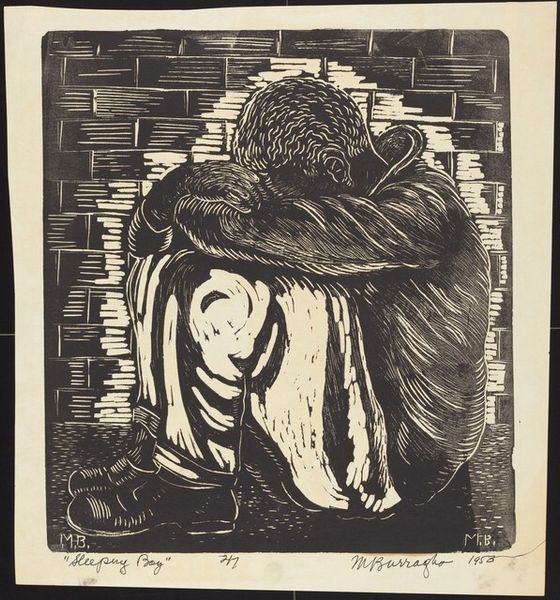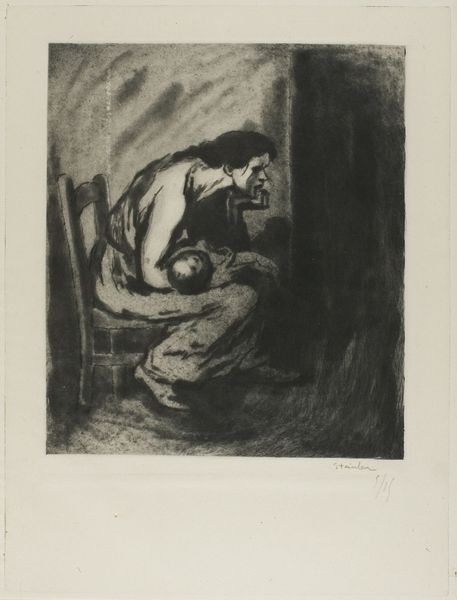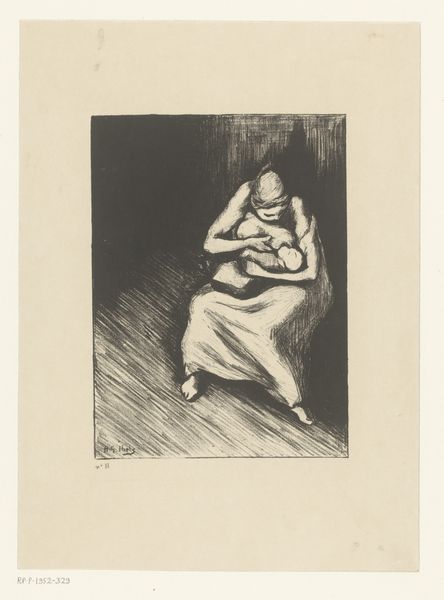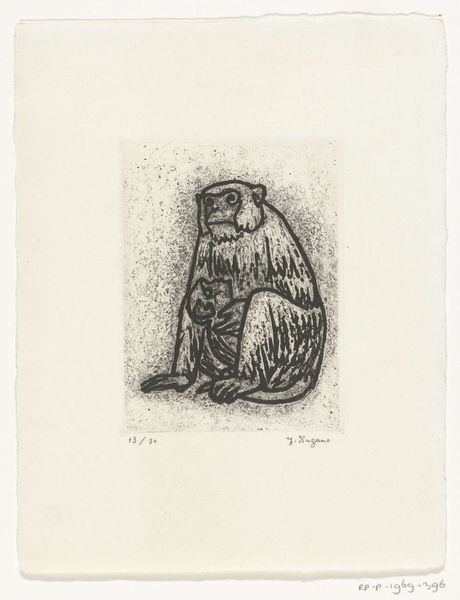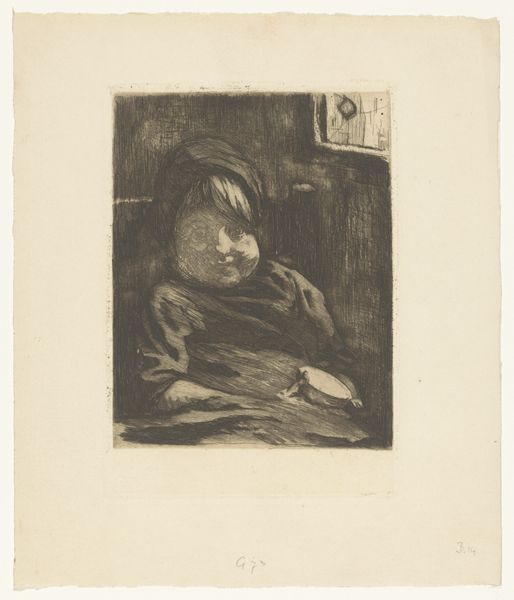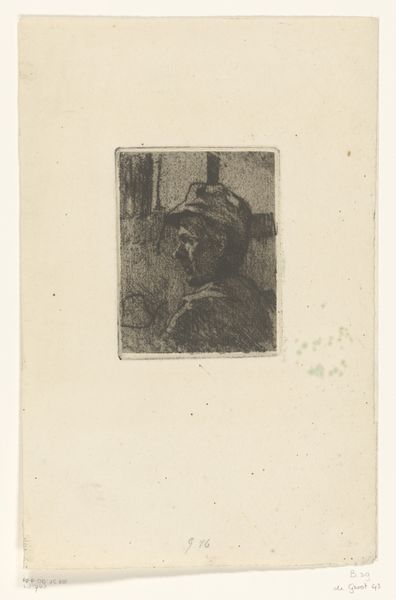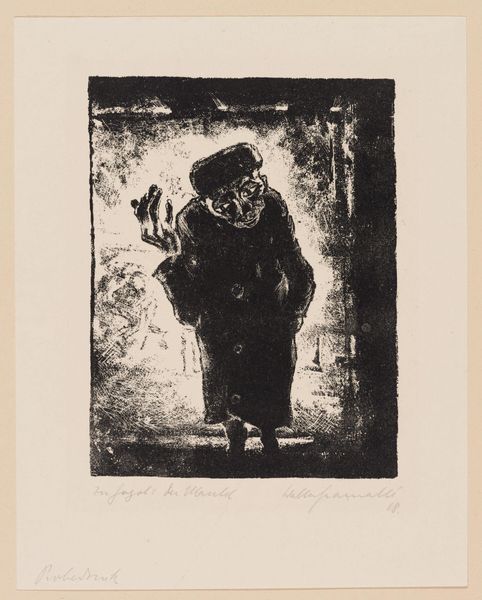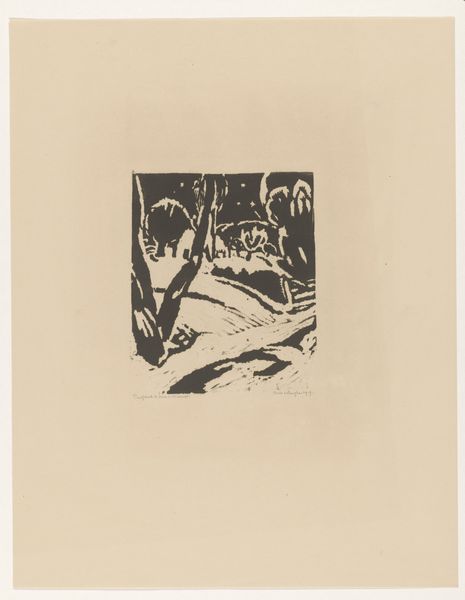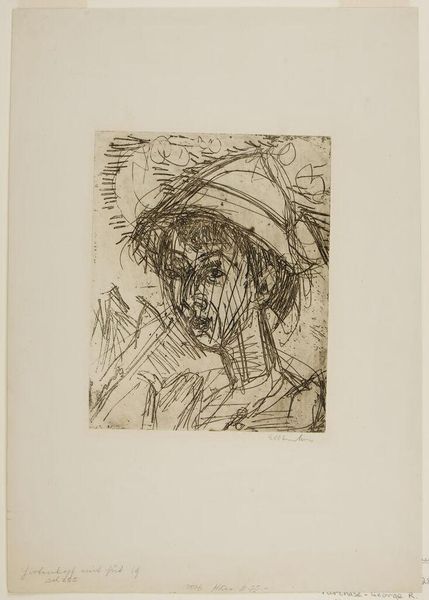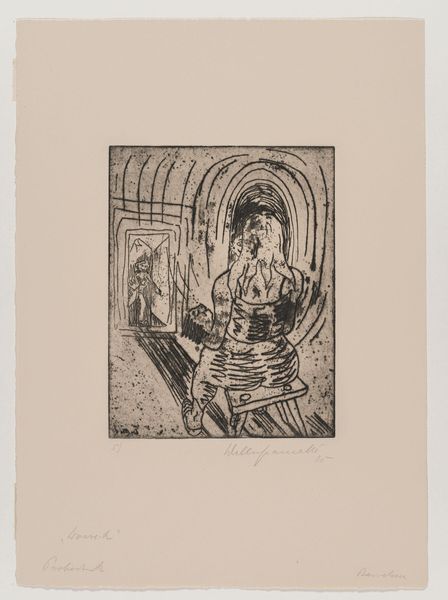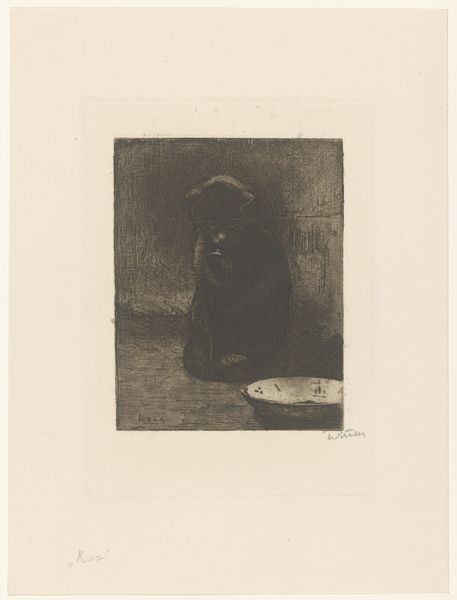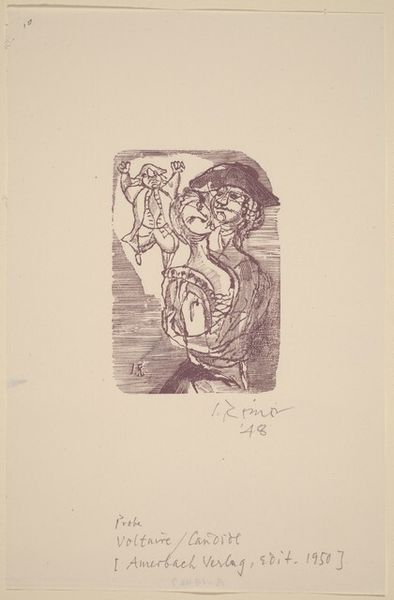
Copyright: National Gallery of Art: CC0 1.0
Curator: This striking woodcut, titled "The Letter," was created in 1943 by the Mexican artist Leopoldo Méndez, a significant figure in the Mexican Muralism movement and the Black Arts Movement. Editor: Immediately, the visual language of grief leaps out. Look at the stark contrast between the light and shadow; it amplifies the palpable sense of sorrow radiating from the figure hunched over the table. The scale feels very intimate. Curator: Indeed, the artist's choice of woodcut is no accident. Its bold lines and graphic quality create a raw emotional intensity. The central figure’s posture is a universally recognized sign of despair. Beyond that, we see potent symbols embedded within the domestic setting: a swastika flag and a portrait of, what appears to be, Hitler are subtly integrated in the room's backdrop. Editor: Oof. Right. The way the pattern on the wall almost seems to swirl like unspoken dread! These details make you wonder: what terrible news does that letter contain? It’s as if the artist wanted to distill the essence of human anguish during wartime into a single, devastating moment. Curator: Exactly. Méndez’s image captures the anxieties surrounding the Second World War and their personal impact, reflected even in the patterns surrounding the protagonist. His ability to subtly introduce symbols carries the image far beyond mere representation into the sphere of deeply unsettling psychological truth. Editor: It’s unnerving how this tiny scene swells with global unease. Despite the image's seeming simplicity, a deep dive reveals Méndez as a conjurer, trapping immense horror within these confines. Each line is fraught with questions and shadows. Curator: His powerful graphic style invites you to explore deeper truths. The use of iconic forms creates a stark simplicity of grief as something shared universally. Editor: It serves as a quiet reminder of how even intimate moments carry echoes of enormous events, even shaping individual experience with world history. Curator: Quite. Editor: Yes, absolutely.
Comments
No comments
Be the first to comment and join the conversation on the ultimate creative platform.
